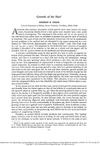Lanceolate Hair-J (LahJ): A Mouse Model for Human Hair Disorders
January 2000
in “
The Mouseion at the JAXlibrary (Jackson Laboratory)
”
TLDR The lanceolate hair-J mutation in mice helps understand human hair disorders like Netherton's syndrome.
The study described the lanceolate hair-J (lahJ) mutation in mice, which arose spontaneously in 1994. These mutant mice exhibited symptoms such as being runted, alopecic, lacking vibrissae, and developing wrinkled skin with age. They suffered from a noninflammatory, proliferative skin disease with follicular dystrophy, and their hair fibers showed abnormalities like trichorrhexis nodosa and trichorrhexis invaginata. The mutation shared characteristics with human autosomal recessive ichthyosiform diseases, such as Netherton's syndrome, and was located on mouse Chromosome 18. Homozygous mice for this mutation had elevated serum IgE levels, similar to human Netherton's syndrome. This mouse model provided insights into human hair disorders.
